0 Comments
In September 2015, Montreal choreographer Gérard Reyes presented his solo The Principle of Pleasure at Théâtre La Chapelle. What follows are excerpts from a conversation Reyes and I had after the end of the show’s run.
SYLVAIN VERSTRICHT The section of The Principle of Pleasure where you danced for the person sitting on the chair was especially potent for me because in that moment we (the audience) became voyeurs, which oddly I didn’t feel we were before that point. A question that kept popping up in my mind during the show, which might sound absurd though I don’t think it actually is, was “Are we just spectators?” What is the role of the audience in The Principle of Pleasure? GÉRARD REYES From my experience as a seasoned concert dancer, I was sick of the conventional separation between audience and performer in a theatre, whereby the audience places primacy on the artist, yet the artist refuses to truly acknowledge the audience until the end of the show. There is a latent potential for exchange there! While I was conceiving The Principle of Pleasure, I was attending various performative events and spaces that were new to me – trans bars, female strip clubs, BDSM/fetish events, queer parties, vogue balls – each with its own code of conduct. These codes opened me up to consider a more equitable and fulfilling relationship between the ‘audience’ and ‘performer’ that is based on shared responsibility and communication. I propose a situation, encourage the audience to choose a role/perspective which speaks to them within it and hope that it will mutate over the course of the show: spectator, client, voyeur, performer, lover, dom, sub, friend, person, etc. There is another dimension to the audience. It is both inside (live participants) and outside the theatre (i.e. on social media such as Facebook, Instagram, Twitter and wherever else people decide to post photos and videos they take during the show). VERSTRICHT Speaking of Instagram, the image is a huge part of the show; there are two mirrors onstage, two photographers, one videographer, and – as you mentioned – audience members are also invited to take pictures with their cell phones. Why did you decide to set the performance in that environment? REYES Yes, image is a part of the show, but it is only the most superficial layer of the work. I use the elements you mentioned as well as others (mirrors, chairs, cameras, lighting, humans) to create images, define space and create proximity in order to allow for more intimate relationships to emerge between the audience and myself. That is where my greater interest lies. The reason I allow photos during the show is four-fold: 1) to give the audience the freedom to make choices; 2) to invite the audience to enter into a more active relationship with me and their surroundings; 3) to subvert conventions; and 4) to play with the idea of celebrity. I want to make the theatre a more inviting place to be, where people can relax and be themselves. One of my strategies is to allow the audience to do what they do all the time when they’re not in the theatre – talk, move around, stand, sit, use their phones. I want to address the audience as individuals and encourage them to express themselves. Hopefully some will come to the realization that behaviour is a choice. We have more control than we think over ourselves and any given space. Our individual choices help inform the choices of those around us. VERSTRICHT A big part of the way you also play with celebrity is by using Janet Jackson songs throughout the show, not to mention that she also provides you with the title for the piece. There have been quite a few works recently where queer and/or fem men have emulated pop stars (Beyonce is a particularly popular one these days). I’ve been wondering if it’s because, as a fem man in our culture, the highest level of celebrity one can seemingly aspire to is to be on RuPaul's Drag Race. It sort of makes me think about karaoke and how it’s an opportunity for people, if only for a moment, to sing as if they were their favourite pop star. It also plays into ball culture and how people who had really hard lives could act like divas for a day. This is a difficult question because it extends beyond you, but I was wondering if you could talk about what your personal reasons were for playing with the idea of celebrity... REYES We feel we “know” celebrities by their regular appearances on magazine covers and the banal details they share about their lives. But the physical and emotional distance they maintain from their fans actually gives them a power that makes them appear elusive, unique and desirable. I play with the cliché of this kind of celebrity at the beginning of my piece by presenting an extroverted character who is not embarrassed about displaying his body or showing self-appreciation or being filmed or photographed. But I want the external image of celebrity that opens my piece to fade to the background of the more multidimensional personas who the audience encounters once we are all on stage together. These personas I created embody the deeper layers of my sexuality, imagination, pleasure and desire that I have discovered and cultivated over the last few years. They are glamorous and physically attractive, nevertheless they are not shallow. Rather they are personable, generous and open to sharing their intimacy with whoever is willing to come along. VERSTRICHT Do you know Robert St-Amour? He's basically the best dance spectator. He goes to see a lot of shows and almost always writes a little something about them on Facebook after. After seeing your piece, he wrote “Les premiers moments sont inconfortables (pour moi), mais peu à peu, ‘j’apprivoise la bête’ ou je dirais plutôt que ‘la bête m’a appprivoisé’. La suite devient agréable et je suis presque déçu de reprendre ma place pour la fin de la présentation.” When I read that, I realized how important queer performance still is. Maybe sometimes, as queer people, we take it for granted. REYES I want to respond to St-Amour’s comment about my solo – that he was uncomfortable at first but then “the beast” (i.e. I) tamed him. It is indeed my intention to softly confront the audience but with the hope that they will overcome their fear. If they feel uncomfortable with my revealing costume or being on stage with me or in a moment when my eyes meet theirs, then the non-judgemental environment that I create is propitious for them to feel their discomfort and let go of it (if they so choose).
In this colourful dump, performers can disappear without leaving the stage or fall from considerable heights without hurting themselves. It is a post-apocalyptic world of overconsumption that lies before us and they are doomed to live in it. They may be able to choose from thousands of articles of clothing, but the choice is unappealing; it’s the only one they have. Their movement translates as play that spurs from idleness, which even comes across as the source of their masturbation and dry humping. They don’t even have the internet.
Every once in a while, unexpectedly, the performers cease their dicking around and break into beautiful song. In juxtaposing the music of Bach with a garbage dump, a thematic kinship emerges with Meg Stuart’s Built to Last (FTA, 2014): how is it possible that the species responsible for this post-apocalyptic mess also created such divine music? As the performers live out the last moments of life on earth in slow motion, we think there might be something redeeming about these creatures after all. May 29-June 1 Monument-National – Salle Ludger-Duvernay www.fta.qc.ca 514.844.3822 Tickets: 40-60$ 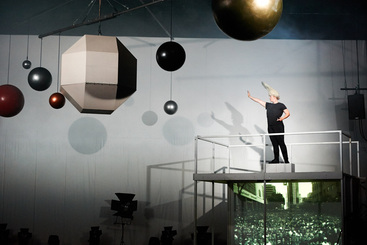 Built to Last, photo d'Eva Wurdinger Built to Last, photo d'Eva Wurdinger Lorsque j’ai assisté au concert de Martha Wainwright au Théâtre Outremont, je ne pouvais cesser de percevoir l’événement tel qu’il était. Assis au balcon, j’étais étrangement conscient du fait que nous étions sur une gigantesque boule qui flottait dans l’espace, boule sur laquelle un bâtiment avait été érigé, bâtiment dans lequel un être humain chantait, être humain qui était observé par une centaine d’autres de son espèce. Tout ça me semblait d’une absurdité et d’une beauté totales. Cette absurdité n’est pas seulement le contexte inévitable de Built to Last de Meg Stuart, mais aussi son contenu. Au-dessus de la scène est suspendu un mobile géant de neuf planètes entourant un soleil blanc. En avant-scène git une maquette de tyrannosaure. La scène, microcosme pour la planète terre au complet, apparait comme un terrain de jeu immense où les actions humaines n’ont rien à voir avec les forces de l’univers. L’insignifiance des humains transparaît. Ils ne font que jouer; ils n’ont jamais la chance de participer aux affaires de l’univers ou même de les influencer le moindrement. La danse initiale des cinq interprètes se limite à un calcul de l’espace, aux paramètres du corps qu’ils ne peuvent jamais excéder. Ils sont confinés à l’humain. Alors, sur ce terrain de jeu démesuré, les danseurs (mais aussi les personnages qu’ils interprètent) font du théâtre. Leurs mouvements ne s’accumulent pas; ils ne font que se suivre et ils perdent leur sens aussitôt qu’ils sont exécutés. « Nous sommes motivés par l’enthousiasme, » dit l’un des interprètes. L’enthousiasme… Un sentiment vif, mais qui ne sait perdurer. « What’s in our hearts and in our souls must find a way out. » Built to Last avance au son de Stockhausen, de Beethoven, de Rachmaninov… Il y a un décalage énorme entre ces musiques dramatiques et la danse des interprètes, qui ne font pas dans la virtuosité. Ironiquement, la musique semble plus appropriée pour le mouvement des planètes que celui des humains. Notre musique est plus grande que nous. Peut-être est-ce pour cela que la musique de Beethoven aura survécu plus longtemps que Beethoven lui-même. Elle n’est pas du domaine de l’humain, mais du divin. Dans un cube blanc, les danseurs bougent comme s’ils se trouvaient en état d’apesanteur. Les quelques moments magiques offerts par Built to Last ne semblent pas parvenir de l’intérieur de l’humain, mais de sa place dans l’univers. Je le répète : nous nous trouvons sur une boule qui flotte dans l’espace. Dans Forgeries, Love and Other Matters, œuvre co-créée avec Benoît Lachambre, Stuart nous avait présenté un monde post-apocalyptique. À la manière de Charlton Heston devant la Statue de la Liberté dans Planet of the Apes, avec Built to Last, on se rend compte que ce monde est peut-être déjà le nôtre. Tout dépendant d’où notre regard se pose, le titre du spectacle peut paraître ironique ou approprié. Les planètes sont faites pour durer. Le dinosaure, non. Les humains… Ils sont des dinosaures en devenir. Nous ne sommes que de futurs fossiles. 28 & 29 mai à 20h Usine C www.fta.qc.ca 514.844.3822 / 514.842.2112 Billets : 48$ / 30 ans et mois ou 65 ans et plus : 43$ 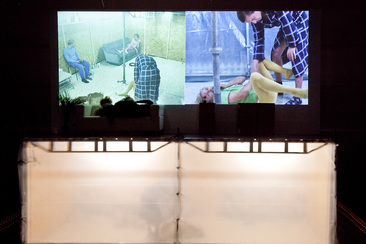 Markus Öhrn's Conte d'amour, photo by Robin Junicke Markus Öhrn's Conte d'amour, photo by Robin Junicke “We’ve been waiting for you, daddy.” –Anders Carlsson, Conte d’amour “Am I in love? –Yes, since I’m waiting.” –Roland Barthes, A Lover’s Discourse If you want love, pure love, get yourself a dummy. Sure, when you feed them chips or make them drink Coke, it will all just fall to the floor, but that’s precisely what you want. The absence of thirst and hunger means that they will never, ever leave you. In Markus Öhrn’s Conte d’amour, the other is a blank canvas onto which we can project our love, so that it can never find itself soiled by the other’s own velocity, since it has none. (I once wrote, “On veut la projection qui nous échappe par sa propre vie.”) Of course, a dummy might not fulfil all of your desires. So, alternatively, make sure that, if the one you love is human, they are as dependent on you as possible. It might be infantilizing, of course, but this works in your favour. Children are less likely to leave you than your adult partner. To make their leaving even less likely, bring them McDonald’s. Under the right light, those fries and nuggets can really look golden. “Everything is simpler in Thailand,” a character tells us. “Thai women are not as troublesome as Occidental ones.” This is the moment at which Conte d’amour becomes more than just a play loosely based on a sordid news story. This is the moment when in one fell swoop it becomes political by exposing the relationship between racism, sexism, and capitalism. The statement is of course naïve. What makes one less troublesome has nothing to do with race or gender. It has to do with one’s economic dependency. Eve was not made from Adam’s rib. She was made from his wallet. If you want love, pure love, do make the dependent one feel like they have some power. Withhold your attention so they feel like they have to earn it. Let them turn a basement beam into a stripper pole. If they can seduce you, they must have some power. Ignore the fact that their survival depends on it. The saviour comes down from the ceiling as though from a helicopter, bringing chips and Coke to his grateful African children. Maintain the system that keeps them dependent on you, but let them feel like you’re being good to them when you give them the bare necessities of life. The lover comes down from the skies, bearing gifts, to save us from the catastrophe zone that our single lives were, before they came along. To keep the other dependent on you, it might be best to make sure that they are satisfied with little. Like maracas. “Gifts… and the feelings that come with them.” The sequestered children even have a video camera. It gives them the illusion of agency, like they are not just objects, but subjects shaping their own reality. They are not just victims. They are witnesses of each other’s victimization. And yet, “I am a victim!” shouts that guy from Portlandia, who plays the only female character in the play (which probably should have ended on that powerful note). For the loved becomes owned by the lover, becomes the screen against which the projection (love) violently lands. During Conte d’amour, I kept thinking that it was like witnessing an extreme version of Roland Barthes’s A Lover’s Discourse. Except that, rereading my notes, I realized that I kept using “the lover” and “the loved” to refer to all of the characters, no matter if they were the kidnapper or the kidnapped. Maybe Barthes forgot that love can also be a form of Stockholm Syndrome. May 28-30 at 7pm Théâtre Rouge du Conservatoire www.fta.qc.ca 514.844.3822 / 1.866.984.3822 Tickets: 43$ / 30 years old and under: 38$ |
Sylvain Verstricht
has an MA in Film Studies and works in contemporary dance. His fiction has appeared in Headlight Anthology, Cactus Heart, and Birkensnake. s.verstricht [at] gmail [dot] com Categories
All
|
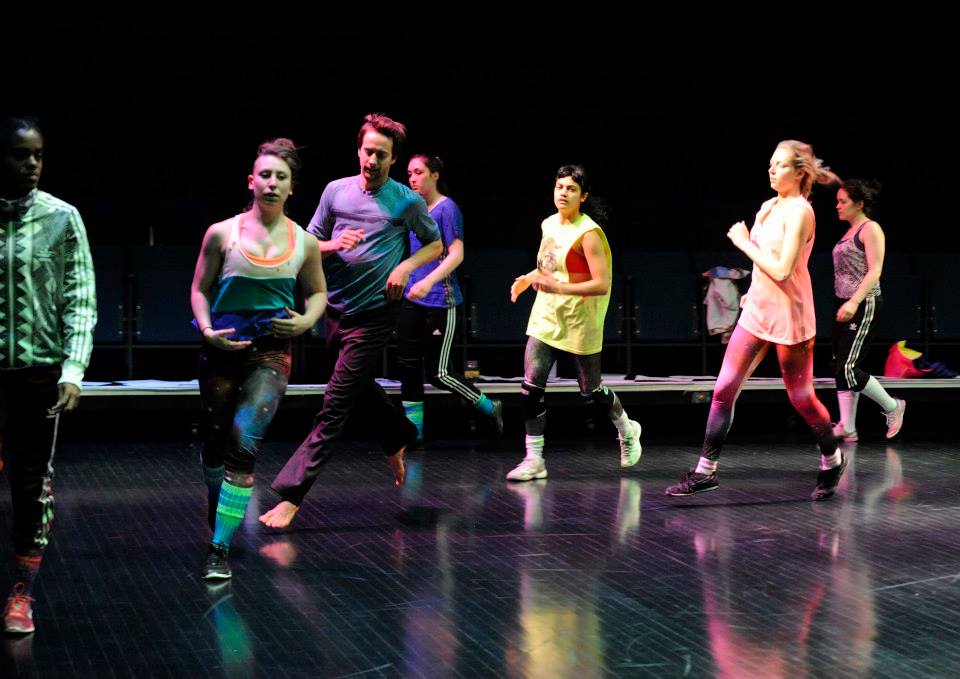
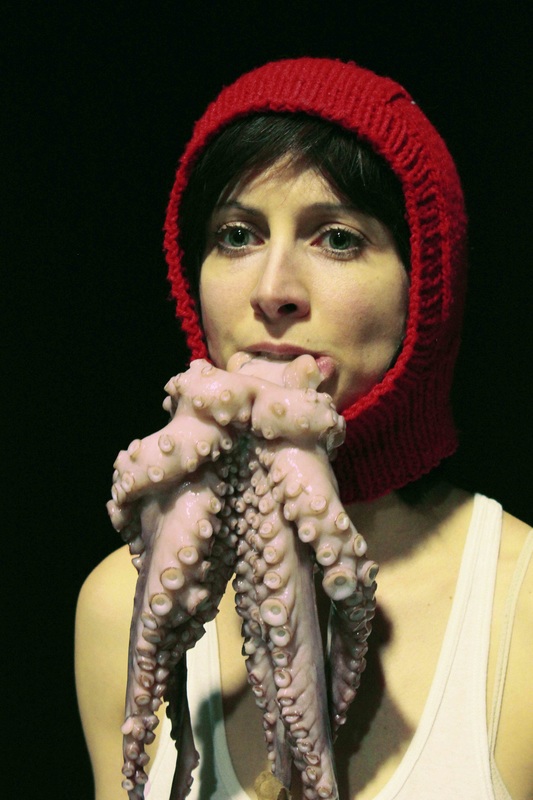
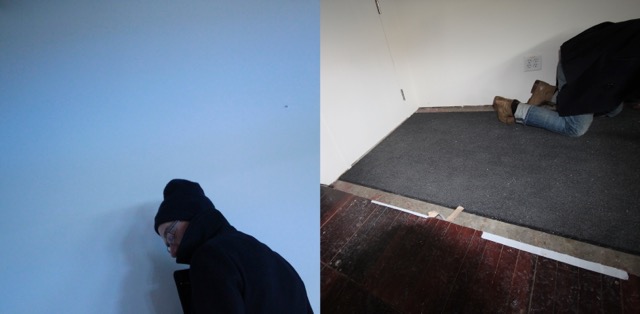
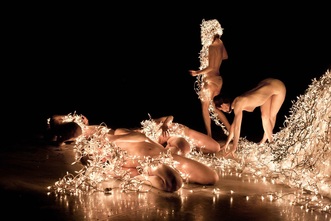

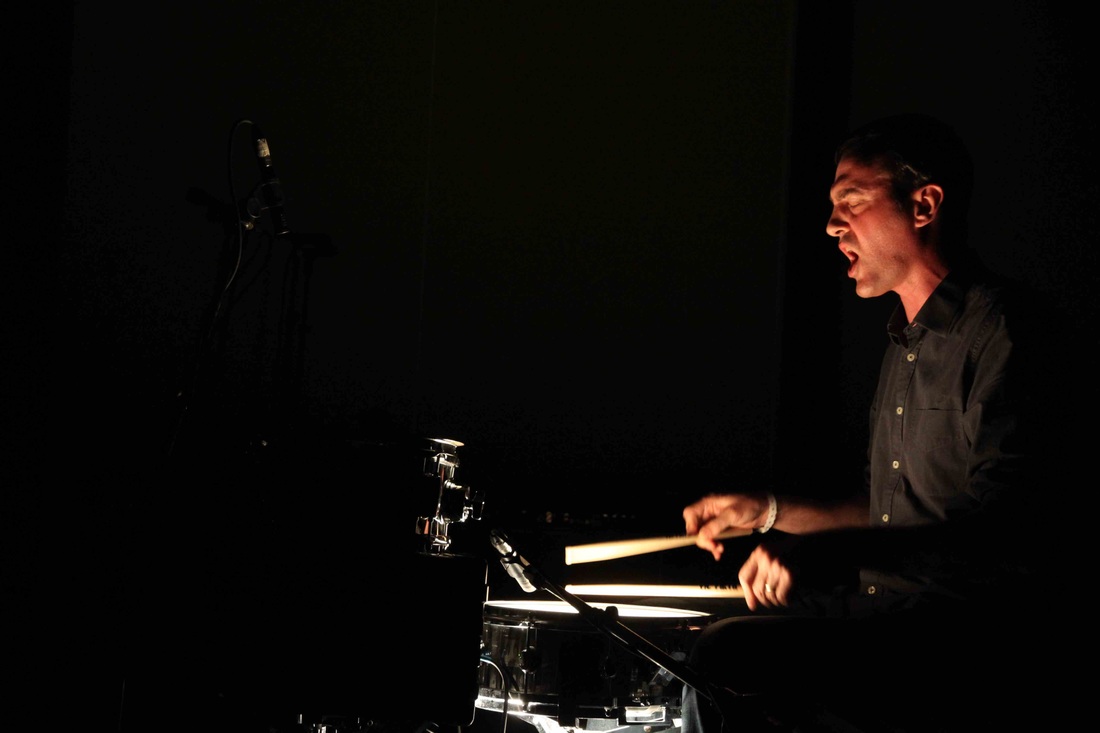

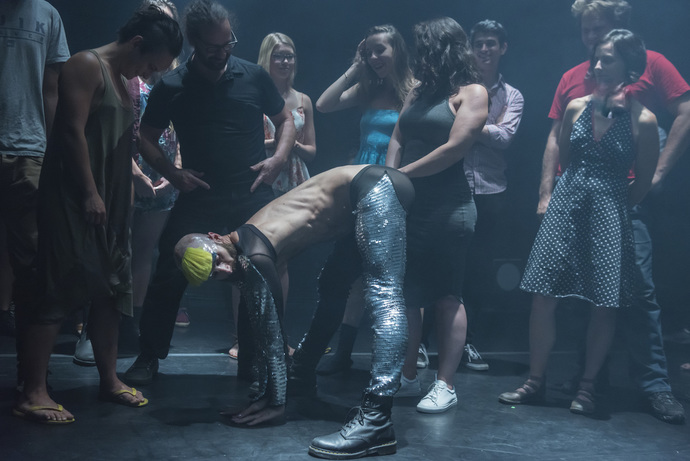
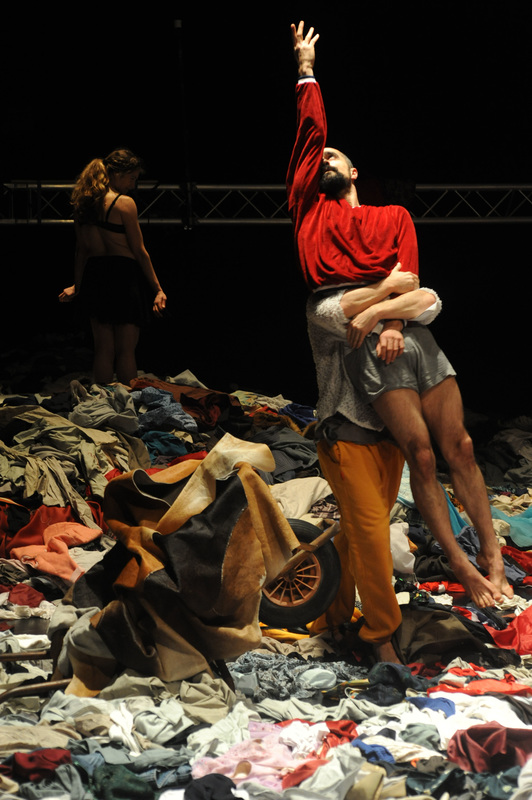
 RSS Feed
RSS Feed